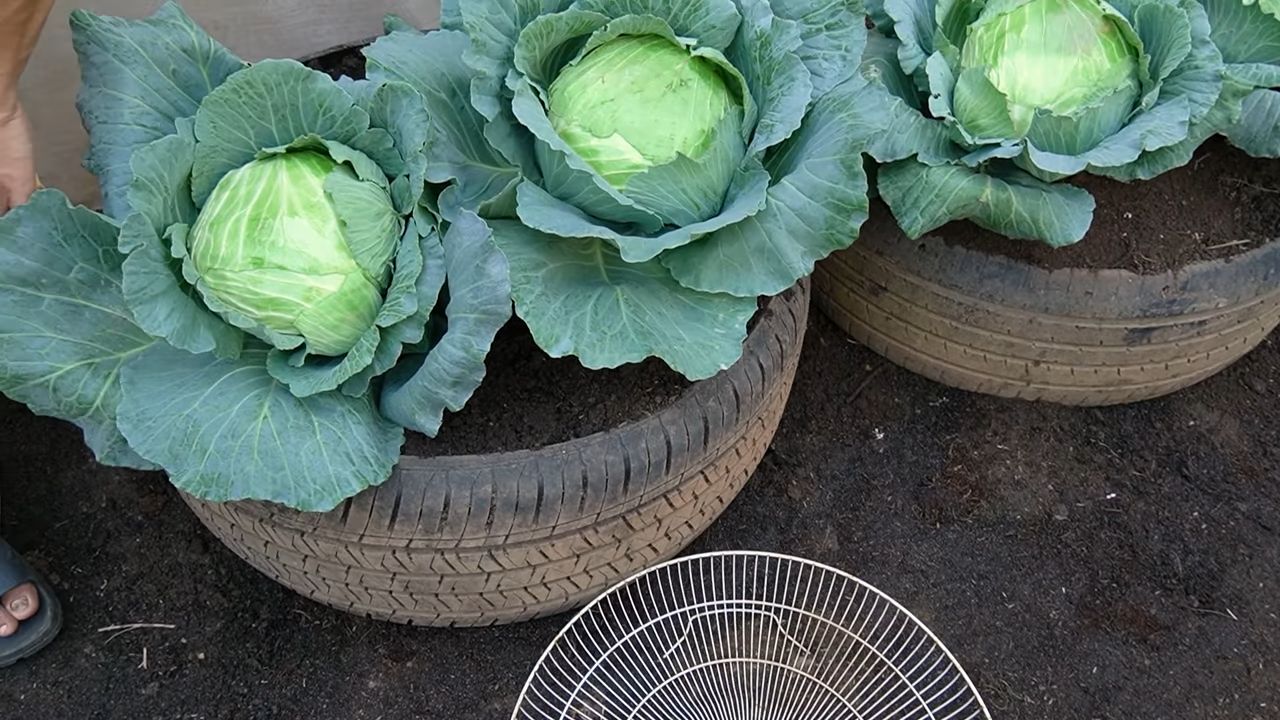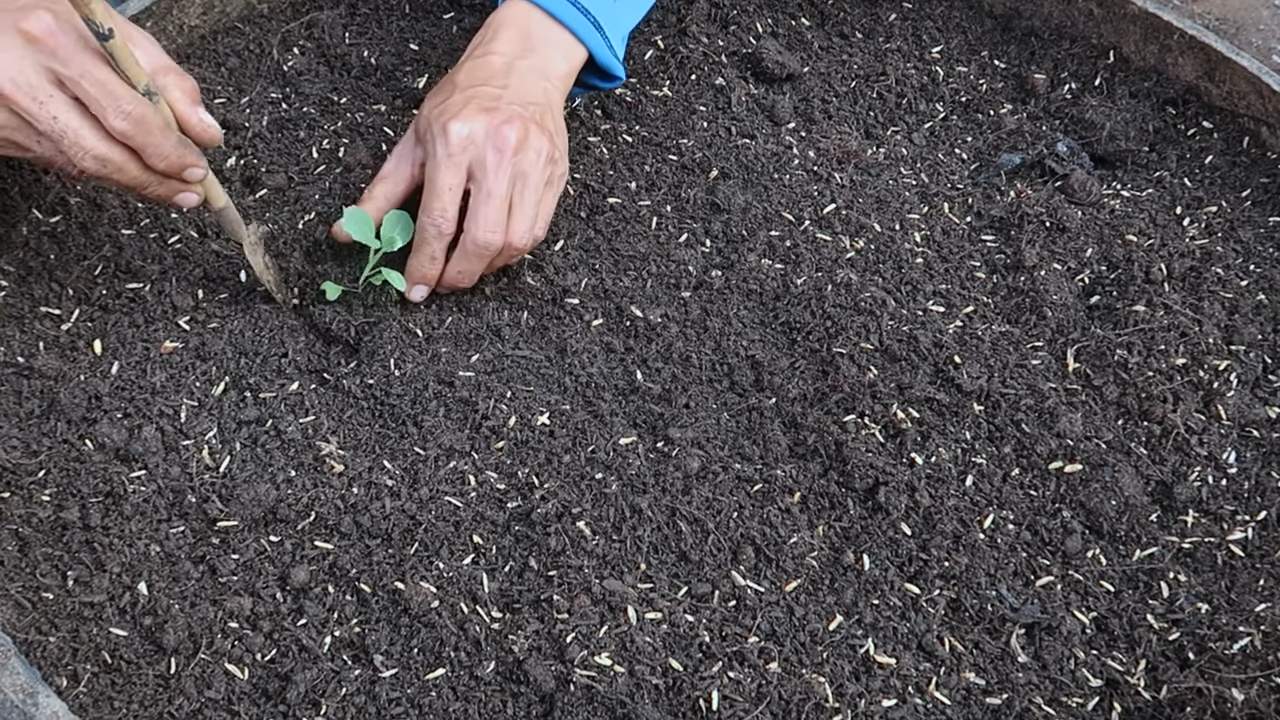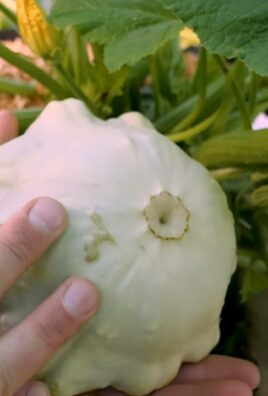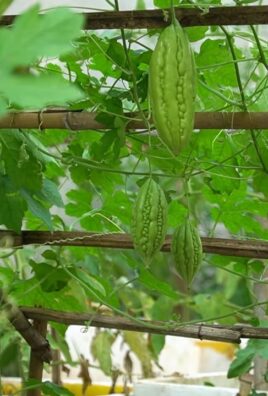Grow cabbage at home, even if you think you don’t have a green thumb! Have you ever dreamt of strolling into your backyard and harvesting a crisp, vibrant cabbage for a delicious homemade slaw or hearty stew? It’s more achievable than you might think, and this DIY guide is your ticket to fresh, homegrown goodness.
Cabbage has a rich history, dating back to ancient times, with evidence suggesting its cultivation in Europe over 4,000 years ago. From humble peasant fare to a staple in diverse cuisines worldwide, cabbage has nourished generations. Think of the Irish colcannon, German sauerkraut, or Asian kimchi – all showcasing the versatility and cultural significance of this humble vegetable.
But why should you bother growing your own? Well, for starters, store-bought cabbage often lacks the freshness and flavor of homegrown varieties. Plus, you have complete control over what goes into your garden, ensuring your cabbage is free from harmful pesticides and chemicals. In this article, I’ll share some simple yet effective DIY tricks and hacks to help you successfully grow cabbage at home, regardless of your experience level. From choosing the right variety to protecting your precious plants from pests, I’ve got you covered. Get ready to enjoy the satisfaction of harvesting your own delicious, healthy cabbage – it’s easier than you think!

Growing Cabbage at Home: A Beginner’s Guide
Hey there, fellow gardening enthusiasts! Ever thought about growing your own cabbage? It’s surprisingly rewarding, and nothing beats the taste of fresh, homegrown veggies. I’m going to walk you through everything you need to know to successfully cultivate these leafy greens right in your backyard (or even in containers!).
Choosing Your Cabbage Variety
Before we get our hands dirty, let’s talk cabbage varieties. There’s a whole world beyond the standard green cabbage you see in the grocery store! Consider these options:
* Early Varieties: These mature quickly (around 60-70 days) and are great for a spring or early summer harvest. Examples include ‘Golden Acre’ and ‘Early Jersey Wakefield’.
* Mid-Season Varieties: These take a bit longer (70-85 days) and offer good yields. ‘Copenhagen Market’ is a popular choice.
* Late Varieties: These are your storage cabbages, taking 85+ days to mature. They’re perfect for fall harvests and can be stored for months. ‘Danish Ballhead’ is a classic.
* Red Cabbage: Adds a pop of color to your garden and salads! ‘Red Acre’ is a reliable variety.
* Savoy Cabbage: Known for its crinkled leaves and mild flavor. ‘Savoy King’ is a good option.
Think about your climate, growing season length, and what you plan to do with your cabbage when it’s harvested. This will help you pick the perfect variety!
Getting Started: Seeds vs. Transplants
You have two main options for starting your cabbage: seeds or transplants.
* Seeds: Starting from seed gives you more control over the entire process and is generally cheaper. However, it requires more time and attention.
* Transplants: Buying transplants from a local nursery is a quicker and easier option, especially if you’re short on time or space.
I personally prefer starting from seed whenever possible, but transplants are a great alternative if you’re just getting started.
Starting Cabbage from Seed (My Preferred Method!)
If you’re like me and love the satisfaction of starting from seed, here’s how to do it:
1. Timing is Key: Cabbage needs a cool growing season. Start your seeds indoors 6-8 weeks before the last expected frost in your area for a spring crop, or 10-12 weeks before the first expected frost for a fall crop.
2. Prepare Your Seed Starting Mix: Use a seed starting mix that’s light and well-draining. You can find this at most garden centers.
3. Sow the Seeds: Fill your seed starting trays or pots with the mix. Make small indentations (about ¼ inch deep) and sow 2-3 seeds per cell. Cover lightly with soil.
4. Water Gently: Water the soil gently to avoid disturbing the seeds. A spray bottle works well for this.
5. Provide Warmth and Light: Keep the soil consistently moist and provide warmth (around 70-75°F). A heat mat can be helpful. Once the seedlings emerge, provide plenty of light. A grow light is ideal, but a sunny windowsill can also work.
6. Thin the Seedlings: Once the seedlings have their first true leaves (the second set of leaves), thin them to one seedling per cell. Snip off the weaker seedlings at the soil line.
7. Harden Off the Seedlings: Before transplanting your seedlings outdoors, you need to “harden them off.” This gradually acclimates them to outdoor conditions. Start by placing them outside in a sheltered location for an hour or two each day, gradually increasing the time over the course of a week or two.
Transplanting Your Cabbage Seedlings (or Store-Bought Transplants)
Whether you started your own seedlings or bought transplants, the transplanting process is the same:
1. Choose the Right Location: Cabbage needs at least 6 hours of sunlight per day. Choose a location with well-draining soil.
2. Prepare the Soil: Amend the soil with compost or well-rotted manure to improve drainage and fertility. Cabbage is a heavy feeder!
3. Space the Plants Properly: Space your cabbage plants 12-24 inches apart, depending on the variety. Smaller varieties can be closer together.
4. Dig the Holes: Dig holes that are slightly larger than the root ball of your seedlings or transplants.
5. Gently Remove the Plants: Carefully remove the plants from their containers, being careful not to damage the roots.
6. Place the Plants in the Holes: Place the plants in the holes, making sure the top of the root ball is level with the surrounding soil.
7. Fill in the Holes: Fill in the holes with soil and gently firm the soil around the plants.
8. Water Thoroughly: Water the plants thoroughly after transplanting.
Caring for Your Cabbage Plants
Now that your cabbage plants are in the ground, it’s time to provide them with the care they need to thrive:
* Watering: Cabbage needs consistent moisture, especially during head formation. Water deeply whenever the top inch of soil feels dry.
* Fertilizing: Fertilize your cabbage plants every 2-3 weeks with a balanced fertilizer. Follow the instructions on the fertilizer package.
* Weeding: Keep the area around your cabbage plants free of weeds. Weeds compete with cabbage for nutrients and water.
* Mulching: Apply a layer of mulch around your cabbage plants to help retain moisture, suppress weeds, and regulate soil temperature. Straw, wood chips, or shredded leaves work well.
* Pest Control: Cabbage is susceptible to several pests, including cabbage worms, aphids, and flea beetles. I’ll cover pest control in more detail below.
Dealing with Pests and Diseases
Unfortunately, cabbage plants can be a magnet for pests. Here’s how I deal with the most common culprits:
* Cabbage Worms: These green caterpillars can quickly decimate your cabbage plants. The best way to control them is with Bacillus thuringiensis (Bt), a natural bacteria that is safe for humans and pets. Apply Bt to the leaves of your cabbage plants according to the package instructions. Handpicking the worms is also effective, if you’re diligent.
* Aphids: These tiny insects suck the sap from plants, causing them to weaken and distort. You can control aphids with insecticidal soap or a strong blast of water from a hose. Introducing beneficial insects like ladybugs can also help.
* Flea Beetles: These tiny beetles chew small holes in the leaves of cabbage plants. You can control flea beetles with row covers or by dusting the plants with diatomaceous earth.
* Clubroot: This fungal disease causes the roots of cabbage plants to swell and distort. To prevent clubroot, plant resistant varieties and avoid planting cabbage in the same location year after year. Improve soil drainage and maintain a soil pH of 6.5-7.0.
Row Covers: I highly recommend using row covers, especially early in the season. These lightweight fabric covers protect your plants from pests and frost.
Harvesting Your Cabbage
The moment you’ve been waiting for! Here’s how to know when your cabbage is ready to harvest:
* Check the Head: The head should be firm and solid.
* Consider the Size: The size of the head will vary depending on the variety. Check the seed packet or plant tag for information on the expected size.
* Cut the Head: Use a sharp knife to cut the head from the stem, leaving a few outer leaves attached.
Succession Planting: To enjoy a continuous harvest of cabbage, plant new seedlings every few weeks.
Storing Your Cabbage
If you’ve grown a late-season variety, you can store your cabbage for several months. Here’s how:
* Choose Healthy Heads: Select heads that are firm and free of blemishes.
* Remove Outer Leaves: Remove any loose or damaged outer leaves.
* Wrap in Newspaper: Wrap each head in newspaper.
* Store in a Cool, Dark Place: Store the wrapped heads in a cool, dark place, such as a root cellar or unheated garage. The ideal temperature is 32-40°F.
Troubleshooting Common Cabbage Problems
Even with the best care, you might encounter some problems along the way. Here are a few common issues and how to address them:
* Heads Splitting: This can happen when cabbage plants receive too much water after a period of drought. To prevent splitting, water consistently and avoid overwatering.
* Small Heads: Small heads can be caused by a lack of nutrients, insufficient sunlight, or overcrowding. Make sure your plants are getting enough fertilizer, sunlight, and space.
* Bolting: Bolting

Conclusion
So, there you have it! Growing cabbage at home isn’t just a gardening project; it’s a gateway to fresher, more flavorful meals and a deeper connection with the food you eat. We’ve walked through the process, demystifying each step and highlighting the benefits of cultivating your own leafy greens. From selecting the right variety for your climate to warding off common pests, you’re now equipped with the knowledge to succeed.
Why is this DIY trick a must-try? Because store-bought cabbage simply can’t compare to the vibrant taste and crisp texture of homegrown. Imagine the satisfaction of harvesting a head of cabbage you nurtured from a tiny seedling, knowing exactly where it came from and what went into its growth. Plus, you’ll be reducing your carbon footprint by cutting down on transportation and packaging.
But the benefits extend beyond taste and sustainability. Gardening is a therapeutic activity, a chance to de-stress and reconnect with nature. Tending to your cabbage patch can be a mindful practice, a welcome break from the digital world. And let’s not forget the cost savings! Growing your own vegetables can significantly reduce your grocery bill, especially if you enjoy cabbage frequently.
Ready to take your cabbage cultivation to the next level? Consider these variations:
* Experiment with different varieties: Red cabbage, Savoy cabbage, Napa cabbage – each offers a unique flavor and texture profile. Try growing a few different types to discover your favorites.
* Succession planting: Plant new seedlings every few weeks to ensure a continuous harvest throughout the growing season. This way, you’ll always have fresh cabbage on hand.
* Companion planting: Plant cabbage alongside beneficial herbs and flowers like dill, rosemary, and marigolds to deter pests and attract pollinators.
* Fermenting your harvest: Turn your homegrown cabbage into delicious sauerkraut or kimchi. Fermenting not only preserves your harvest but also adds beneficial probiotics to your diet.
Don’t be intimidated if you’re a beginner gardener. Growing cabbage at home is a rewarding experience that anyone can enjoy. Start small, be patient, and don’t be afraid to experiment. The key is to provide your cabbage plants with the right conditions – plenty of sunlight, well-drained soil, and consistent watering.
We’re confident that you’ll be amazed by the results. So, grab your gardening gloves, order some seeds or seedlings, and get ready to embark on your cabbage-growing adventure. We encourage you to try this DIY trick and share your experiences with us! Post photos of your cabbage patch on social media using #HomegrownCabbage and tell us about your successes and challenges. We can’t wait to see what you create!
Frequently Asked Questions (FAQ)
What is the best time of year to plant cabbage?
The best time to plant cabbage depends on your climate and the specific variety you’re growing. Generally, cabbage is a cool-season crop, meaning it thrives in temperatures between 60°F and 70°F (15°C and 21°C). For spring harvests, start seeds indoors 6-8 weeks before the last expected frost and transplant them outdoors 2-3 weeks before the last frost. For fall harvests, start seeds in mid-summer and transplant them outdoors in late summer or early fall. Check your local extension office for specific planting dates in your area.
How much sunlight does cabbage need?
Cabbage needs at least 6 hours of direct sunlight per day to thrive. Choose a planting location that receives full sun for optimal growth. If you live in a particularly hot climate, some afternoon shade can be beneficial to prevent the leaves from scorching.
What kind of soil is best for growing cabbage?
Cabbage prefers well-drained, fertile soil that is rich in organic matter. The ideal soil pH is between 6.0 and 7.0. Before planting, amend your soil with compost or well-rotted manure to improve drainage and fertility. You can also add a slow-release fertilizer to provide essential nutrients throughout the growing season.
How often should I water my cabbage plants?
Cabbage plants need consistent moisture to thrive. Water deeply and regularly, especially during dry periods. Aim to keep the soil consistently moist but not waterlogged. A good rule of thumb is to water when the top inch of soil feels dry to the touch. Mulching around your cabbage plants can help retain moisture and suppress weeds.
What are some common pests and diseases that affect cabbage?
Cabbage is susceptible to several pests and diseases, including cabbage worms, cabbage loopers, aphids, flea beetles, and clubroot. To prevent pest problems, inspect your plants regularly and remove any pests you find. You can also use row covers to protect your plants from insects. To prevent diseases, choose disease-resistant varieties and practice crop rotation. If you encounter serious pest or disease problems, consult your local extension office for advice on appropriate treatments.
How do I know when my cabbage is ready to harvest?
Cabbage is ready to harvest when the head is firm and solid. The size of the head will vary depending on the variety, but generally, you can harvest when the head reaches the size specified on the seed packet. To harvest, use a sharp knife to cut the head from the stem, leaving a few outer leaves intact.
Can I grow cabbage in containers?
Yes, you can grow cabbage in containers, but you’ll need to choose a large container that is at least 12 inches in diameter and 12 inches deep. Use a well-draining potting mix and provide your cabbage plants with plenty of sunlight and water. Container-grown cabbage may require more frequent fertilization than cabbage grown in the ground.
How can I store my harvested cabbage?
To store your harvested cabbage, remove any damaged or yellowing outer leaves. Wrap the head in plastic wrap or place it in a plastic bag and store it in the refrigerator. Cabbage can typically be stored for several weeks in the refrigerator. You can also ferment your cabbage to make sauerkraut or kimchi, which will preserve it for even longer.
What are some good companion plants for cabbage?
Good companion plants for cabbage include dill, rosemary, thyme, marigolds, nasturtiums, and onions. These plants can help deter pests, attract beneficial insects, and improve the overall health of your cabbage plants. Avoid planting cabbage near other members of the brassica family, such as broccoli, cauliflower, and kale, as they can attract the same pests and diseases.
Is growing cabbage at home worth the effort?
Absolutely! While it requires some effort and attention, growing cabbage at home is a rewarding experience that offers numerous benefits. You’ll enjoy fresher, more flavorful cabbage, reduce your carbon footprint, save money on groceries, and connect with nature. Plus, you’ll have the satisfaction of knowing that you grew your own food. So, give it a try and see for yourself!





Leave a Comment